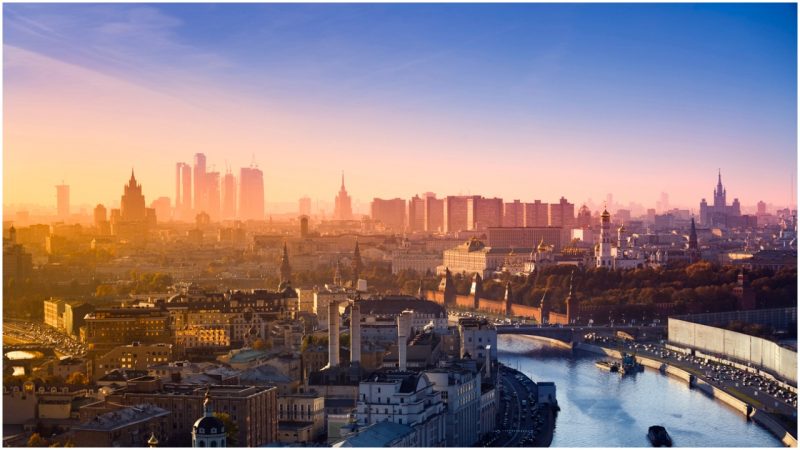Built on the demands of the notorious Soviet leader Joseph Stalin, the seven towering skyscrapers, better known outside of Russia as The Seven Sisters of Moscow, continue to define Moscow’s skyline, still standing tall and proud as reminders of a bygone era.
Glorification of the Soviets was their initial purpose as Stalin’s plans involved making Moscow the “best city in the world in terms of architecture and comfort.” The city’s lack of tall buildings was apparently not in accordance with Stalin’s ambitious plans and this is how the idea of The Seven Sisters of Moscow came to life.
This was not the Soviet State’s first ambitious architectural project. Around a decade before construction began on the seven Stalinskie Vysotki (Stalin’s High-rises), Sergey Kirov put forward a proposal for the Palace of the Soviets, which would be a major administrative center and a demonstration of the might of the then recently formed Soviet Union.
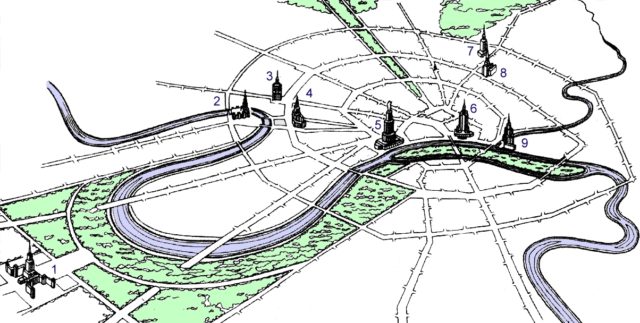
After a protracted public architectural competition, the winning design was modified further and the final plan was for a huge building, 1,362 feet (415 meters) tall, that included a 21,000 seat main hall. By 1941, the foundations had been laid and the steel frame for the lower floors was in place. But World War 2 caused work to halt and the steel was taken for use in the war effort.
In the years after the war, Stalin was reported to have said: “We won the war … foreigners will come to Moscow, walk around, and there are no skyscrapers. If they compare Moscow to capitalist cities, it’s a moral blow to us.” And so, in 1946, the idea of establishing a number of grand skyscrapers was born.
Staying with Soviet designs here is some drone footage of the strange looking abandoned Soviet Tesla lightning factory
In 1947, the locations for the future towers were chosen, and drafts for the buildings were made. This time the designs were made under the direction of Stalin himself, and various Russian architects were commissioned to make the plans a reality. The highest rated commission, for the skyscraper at Vorobyovy Gory, was given to Lev Rudnev, who soon became one of the leading architects in the USSR. This building was to become the Moscow State University, which is noted as being his most remarkable architectural work.
The eight design teams were all presented with awards for the 1948 Stalin State Prize, even though they were still working with draft designs at that time.
Here are the buildings, listed as they appeared in the Stalin Prize decree announced in April 1949. The names of the buildings are the ones used today.
Moscow State University, Sparrow Hills
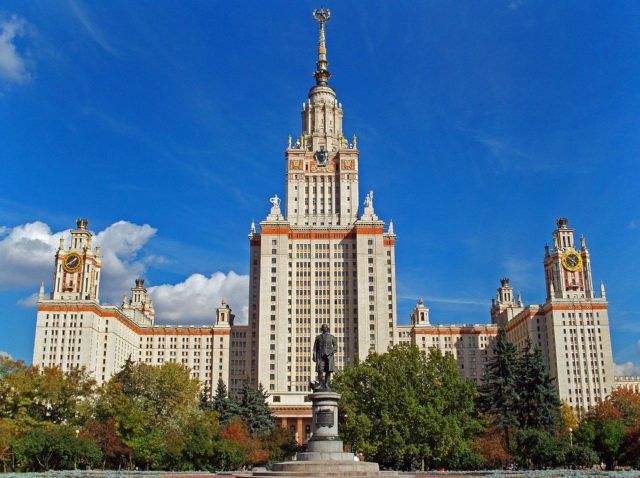
When the Moscow State University skyscraper was finished, it became the crown of the whole project. It was the highest and most beautiful building among the “sisters” and for nearly four decades stood proudly on the top of Europe’s list of highest buildings, until Messeturm skyscraper in Frankfurt was constructed at the beginning of the 1990s.
Construction began in 1947. The main architect Boris Iofan was replaced during the project by the legendary Soviet architect Lev Vladimirovich Rudnev, who had already designed some of the most imposing buildings throughout the country. Numerous legends surround the construction of Moscow State University, some of which sound quite creepy and involve the walling in of hundreds of prisoners of war. But, legends aside, the facts state that by the time construction came to an end in September 1953, thousands of tons of steel were used in the construction of the 36 stories high building, which still holds a world record for being the highest institutional building in the world.
Hotel Ukraina– Radisson Royal Hotel, Moscow
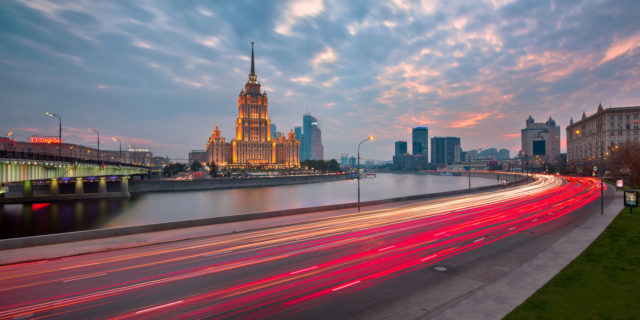
Impressing foreign delegations in Moskow was allegedly the main reason why hotels build at the height of the Soviet Union look so grandiose. One such hotel is the last of Moscow’s Seven Sisters skyscrapers, formerly known only as Ukraina, this imposing building was No. 2 on the height list of the “sisters,” at 650 feet (198 meters).
After five decades in service, a major renovation was undertaken to modernize the hotel which was reopened in 2010. It is now known as Radisson Royal Hotel, Moscow.
Ministry of Foreign Affairs
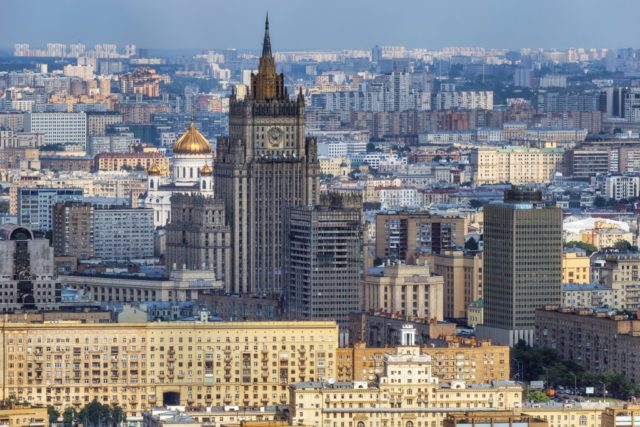
The columned building of the current Ministry of Foreign Affairs for the Russian Federation building is also one of the “seven sisters.” Dubbed by many experts and architecture historians as the best of the “sisters,” this intimidating architectural marvel was built between 1946 and 1953, and it is 564 feet (172 meters) high, with 27 functional floors. In the last phase of construction, it was decided (probably by Stalin himself) that a metal spire should be added to the top to make the building similar to the other sisters.
Hilton Moscow Leningradskaya Hotel
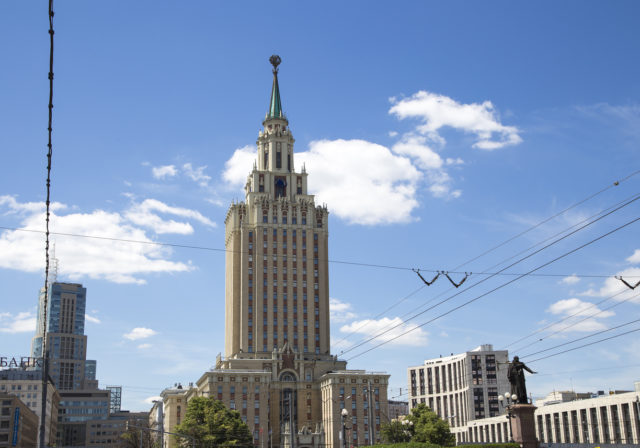
This fantastic fusion of Russian Baroque and Orthodox architecture is also a significant part of the complete picture of the Seven Sisters of Moskow. The man who takes the credit for designing this stunning building is the Soviet architect, Leonid Polyakov.
This skyscraper that stands on Komsomolskaya Square and was previously known as the Leningradskaya Hotel is relatively shorter in comparison with the other “sisters,” standing at 446 feet (136 meters), with 26 floors, seven of which aren’t usable.
A document from 1955 states that only 22% of the total space inside the historic luxury hotel was rentable and it was 50% more expensive than the Moskva hotel. An expensive renovation was finished in 2008, and now the hotel works again, and it is known as the Hilton Moscow Leningradskaya.
Kotelnicheskaya Embankment Building
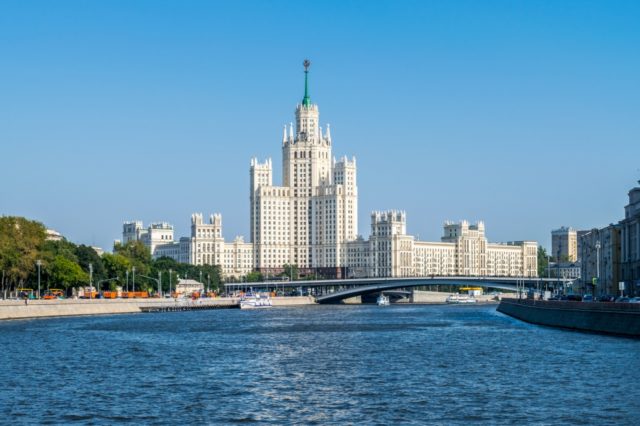
Laid down in September 1947 and completed in 1952, the 577 feet (176 meters) Kotelnicheskaya Embankment Building is the fifth on the list of the Seven Sisters of Moscow.
Situated at the confluence of the Moskva River and Yauza River, the Kotelnicheskaya Embankment Building was initially supposed to serve as an elite housing building, but once construction was over it ended up being a multi-family communal apartments building, or kommunalka.
Kudrinskaya Square Building
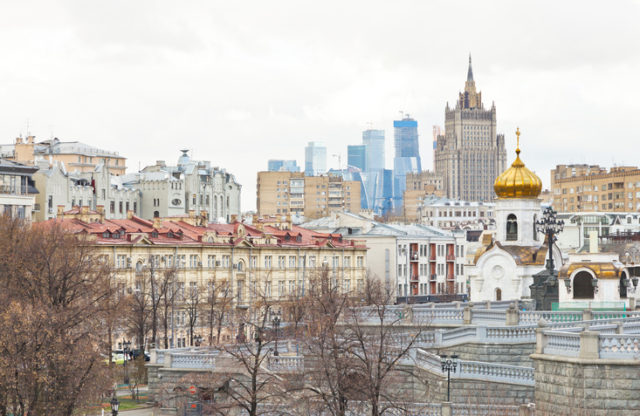
Mikhail Posokhin (Sr.) and Ashot Mndoyants designed this 525 feet (160 meters) tall building of 22 floors, at the end of Krasnaya Presnya street to serve as an apartment complex for Soviet cultural leaders and politicians. Today, the apartments are inhabited by wealthy Russian citizens.
Red Gates Administrative Building
The Red Gates Administrative Building, designed by Alexey Dushkin, is the shortest of the “Seven Sisters.” This 436 feet (133 meters) high skyscraper has 24 levels, and it once housed the Ministry of Construction of Heavy Industry and the Ministry of Transport Construction. Now it is a building with several purposes. The Red Gates building is also known as the Lermontov Tower, because of the Lermontovskaya Square named after the famous poet Mikhail Lermontov.
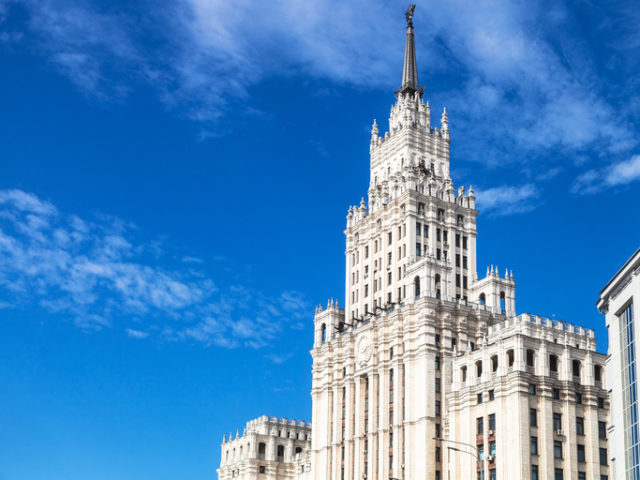
The original plans for the group of The Stalinist skyscrapers included an eighth building which was never made. The eighth “sister” was supposed to be the second highest after the university building, but they realized that it would overshadow the Kremlin and rejected the plans.
The same design was later used for the Palace of Culture and Science in Warsaw, which is still the tallest building in Poland.
